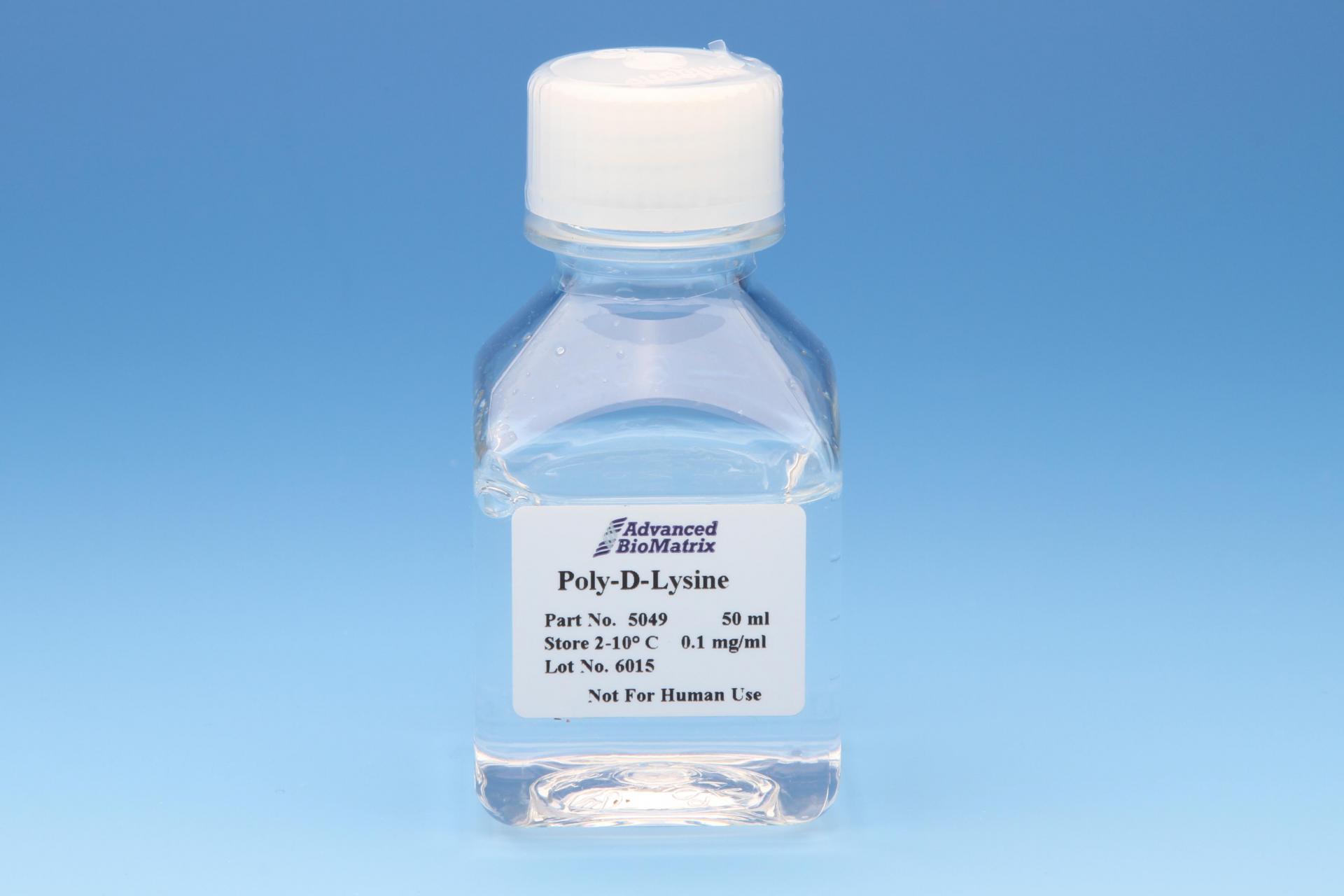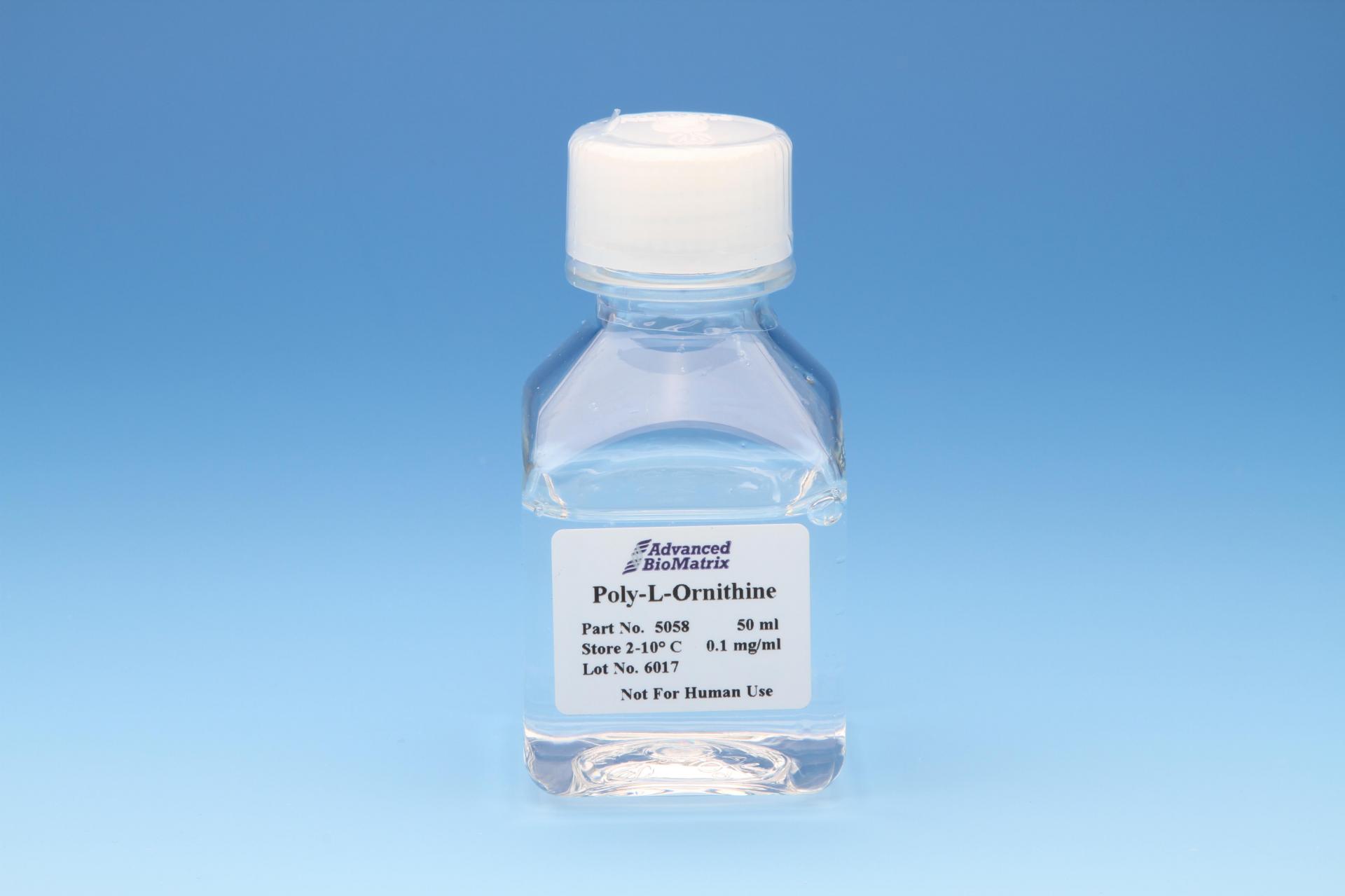-
Collagen
-
Type I - Atelocollagen
- PureCol® Solution, 3 mg/ml (bovine) #5005
- Nutragen® Solution, 6 mg/ml (bovine) #5010
- FibriCol® Solution, 10 mg/ml (bovine) #5133
- PureCol® EZ Gel, Solution, 5 mg/ml (bovine) #5074
- PureCol® Lyophilized, 15 mg (bovine) #5006
- VitroCol® Solution, 3 mg/ml (human) #5007
- VitroCol® Lyophilized, 15 mg (human) #5008
-
Type I - Telocollagen
- TeloCol®-3 Solution, 3 mg/ml (bovine) #5026
- TeloCol®-6 Solution, 6 mg/ml (bovine) #5225
- TeloCol®-10 Solution, 10 mg/ml (bovine) #5226
- RatCol® for 3D gels, Solution, 4 mg/ml (rat) #5153
- RatCol® High Concentration, Solution, 10 mg/ml (rat)
- RatCol® lyophilized, 100 mg (rat)
- RatCol® for Coatings, Solution, 4 mg/ml (rat) #5056
- Type I - Insoluble Collagen
- Type I - Bioinks
- Type II Collagen
- Type III Collagen
- Type IV Collagen
- Collagen Standard
- PureCol® Collagen Coated Plates
- Collagen Scaffolds
- Collagen Hybridizing Peptides
-
Type I - Atelocollagen
- Tunable Stiffness
- CytoSoft® Rigidity Plates
-
Bioprinting
- Support Slurry for FRESH Bioprinting
- Collagen Bioinks for Extrusion Bioprinting
- GelMA Bioinks for Extrusion Bioprinting
- Photoinitiators
- Bioinks and Components for DLP Bioprinting
- Bioink Components
- Methacrylated Collagen
- Methacrylated Gelatin
- Methacrylated Hyaluronic Acid
- Diacrylates
- Methacrylated Polysaccharides
-
3D Hydrogels
- Thermoreversible Hydrogel
- Silk Fibroin
-
Type I Collagen for 3D Hydrogels
- PureCol® Solution, 3 mg/ml (bovine) #5005
- Nutragen® Solution, 6 mg/ml (bovine) #5010
- FibriCol® Solution, 10 mg/ml (bovine) #5133
- PureCol® EZ Gel, Solution, 5 mg/ml (bovine) #5074
- VitroCol® Solution, 3 mg/ml (human) #5007
- TeloCol®-3 Solution, 3 mg/ml (bovine) #5026
- TeloCol®-6 Solution, 6 mg/ml (bovine) #5225
- TeloCol®-10 Solution, 10 mg/ml (bovine) #5226
- RatCol® for 3D gels, Solution, 4 mg/ml (rat) #5153
- HyStem® Thiolated Hyaluronic Acid
- Methacrylated Collagen
- Methacrylated Gelatin
- Methacrylated Hyaluronic Acid
- Diacrylates
- Collagen Sponges
- Methacrylated Polysaccharides
- Extracellular Matrices
- HyStem / Hyaluronic Acid
-
Adhesion Peptides / Proteins
-
Recombinant Adhesion Proteins
- CD2, 0.5 mg/ml #5086
- CDH3, 0.5 mg/ml #5124
- CDH13, 0.5 mg/ml #5125
- CD14, 0.5 mg/ml #5089
- CDH18, 0.5 mg/ml #5090
- CD40, 0.5 mg/ml #5093
- CD86, 0.5 mg/ml #5096
- CD164, 0.5 mg/ml #5100
- CD270, 0.5 mg/ml #5127
- CD274, 0.5 mg/ml #5126
- CD276, 0.5 mg/ml #5123
- E-Cadherin (CD324), 0.5 mg/ml #5085
- ICAM2, 0.5 mg/ml #5107
- Adhesion Peptides
- Collagen Hybridizing Peptides
-
Recombinant Adhesion Proteins
- Reagents
- Assays
Poly-L-Lysine
Powder
Catalog #5173
Poly-L-Lysine
Powder
Catalog #5173
Poly-L-Lysine comes with 5 mg of sterile powder. Poly-L-Lysine is a synthetic amino acid chain that is positively charged and widely used as a coating to enhance cell attachment and adhesion to both plasticware and glass surfaces. This product’s molecular weight ranges from 70,000 to 150,000 Da.
Product Description
Poly-L-Lysine is a synthetic amino acid chain that is positively charged and widely used as a coating to enhance cell attachment and adhesion to both plasticware and glass surfaces.
The molecular weight of Poly-L-Lysine can vary significantly with lower molecular weight (30,000 Da) being less viscous and higher molecular weight (>300,000 Da) having more binding sites per molecule. This product’s molecular weight ranges from 70,000 to 150,000 Da.
Poly-L-Lysine is supplied in a 50 ml amber bottle containing 5 mg of Poly-L-Lysine. The product has been sterilized and is ready-to-use after proper addition of cell culture water.
| Parameter, Testing, and Method | Poly-L-Lysine #5173 |
| Form | Powder |
| Package Size | 5 mg |
| Storage Temperature | -20°C |
| Sterilization Method | Irradiation |
| Molecular Weight | 70,000 - 150,000 Da |
| Sterility - USP modified | No Growth |
| Cell Attachment Assay | Pass |
| Source | Synthetic |
| Shelf Life | Minimum of 6 months from date of receipt |
Directions for Use
Download the full PDF version or continue reading below:
Use these recommendations as guidelines to determine the optimal coating conditions for your culture system. To maintain sterility, perform all operations in a laminar flow hood.
- A typical working concentration is 0.1 mg/ml. To achieve a 0.1 mg/ml concentration, add 50 ml of tissue culture grade water or PBS to the 50 ml bottle. If a different concentration is desired, transfer desired volume of solution from the bottle to a dilution vessel. Dilute to desired concentration using tissue culture grade water or PBS.
- Add appropriate amount of diluted material to culture surface. Typically, 1 ml per 25 cm2is used. Rock gently to ensure uniform coating of culture surface.
Option A:
- Allow to incubate for 60 minutes at room temperature, remove excess solution by aspiration.
- Thoroughly rinse surface with tissue culture grade water and aspirate rinse water.
- Incubate and allow to dry at room temperature or 37°C, covered, for at least 2 hours. Coated cultureware can be stored for up to 1 week. Go to Step 9
Option B:
- Allow to incubate overnight at room temperature, remove excess solution by aspiration.
- Thoroughly rinse surface with tissue culture grade water and aspirate rinse water.
- Incubate and allow to dry at room temperature or 37°C, covered, for at least 2 hours. Coated cultureware can be stored for up to 1 week.
- Introduce medium and cells to the culture surface.
Store remaining Poly-L-Lysine solution at -10 to 30°C
Product Q & A
This product is manufactured solely from synthetic materials and does not contain any raw materials or substances derived from animal origin.
Product References
References for Poly-L-Lysine:
Påhlman, Lisa I., et al. "Hypoxia down-regulates expression of secretory leukocyte protease inhibitor in bronchial epithelial cells via TGF-β1." BMC pulmonary medicine 15.1 (2015): 19.
Li, Yun, et al. "Imaging pHluorin-tagged receptor insertion to the plasma membrane in primary cultured mouse neurons." JoVE (Journal of Visualized Experiments) 69 (2012): e4450.
Morand, David-Nicolas, et al. "Active nanofibrous membrane effects on gingival cell inflammatory response." Materials 8.10 (2015): 7217-7229.
Thuault, Sylvie, et al. "The RhoE/ROCK/ARHGAP25 signaling pathway controls cell invasion by inhibition of Rac activity." Molecular biology of the cell 27.17 (2016): 2653-2661.
Popielarski, Marcin, et al. "The role of Protein Disulfide Isomerase and thiol bonds modifications in activation of integrin subunit alpha11." Biochemical and biophysical research communications 495.2 (2018): 1635-1641.
Wu, Kun Lieh, et al. "Effects of culturing media on hepatocytes differentiation using Volvox sphere as co-culturing vehicle." Biochemical and biophysical research communications 458.3 (2015): 620-625.
Santio, Niina M., et al. "The PIM1 kinase promotes prostate cancer cell migration and adhesion via multiple signalling pathways." Experimental cell research 342.2 (2016): 113-124.
Product Certificate of Analysis
No result for .
Product Videos
Product Disclaimer
This product is for R&D use only and is not intended for human or other uses. Please consult the Material Safety Data Sheet for information regarding hazards and safe handling practices.






